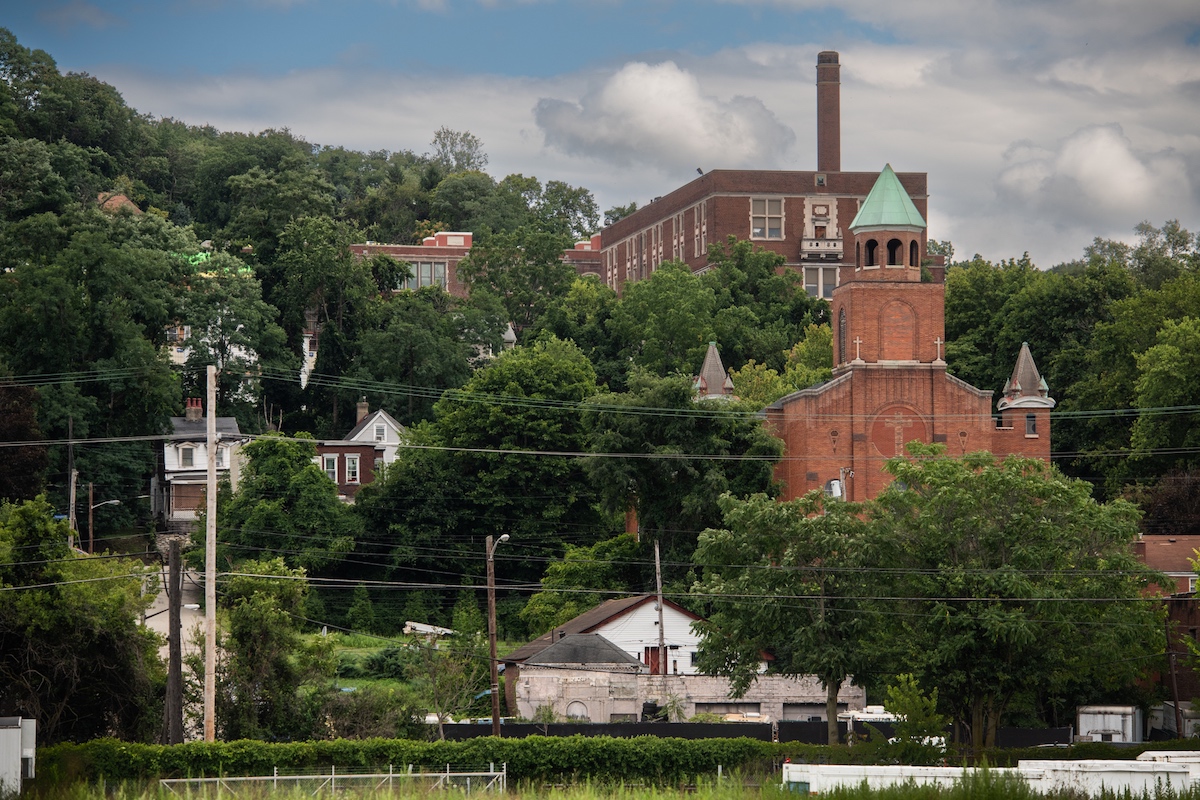The nearest grocery store is a Giant Eagle a mile and a half up the hill in Greenfield, and some longtime residents like Saundra Cole-McKamey, 58, wonder who the bakery is for.
“We didn’t ask for that at all,” she said. Developers “come in our community. They don’t ask what we want.”
Similar concerns apply to the future of a large land tract just north of the business district that, at least for now, sits largely undeveloped. The grassy swath of land, known as Hazelwood Green, is historically tied to the adjacent Hazelwood neighborhood and will likely shape the course of its future.
This fall, the University of Pittsburgh plans to begin constructing a biomanufacturing facility, known as BioForge, that it says will transform “Steel Valley” into “Bio Valley.” Pitt plans to present the project before the City Planning Commission in September, with the commission’s approval required before the university can move forward with construction. The commission process will eventually include a public hearing that could showcase differing neighborhood views on Pitt’s community engagement.
And Carnegie Mellon University, which already operates a Manufacturing Futures Institute on the Hazelwood Green site, received city approval last month to build a Robotics Innovation Center.
Both universities have met with residents to discuss their development plans and say they’re using feedback from residents and community organizations to bring opportunities from Hazelwood Green to the neighborhood. But, so far, some residents are unaware of what’s happening on the site, or feel they’ve been left out of the conversation and may not be served by the development.

In step with the region, Hazelwood is adapting and changing to new economic realities. Decades after the collapse of heavy industry, the Hazelwood Green site has garnered millions in funding from foundations and brought a promise of community revitalization.
“If our community knew that [Hazelwood Green] land was valuable, we could have bought it ourselves,” said Terri Shields, a lifelong Hazelwood resident who founded JADA House International, a local organization that provides space to at-risk teens and women.
A new vision for the former brownfield
For much of the 20th century, Jones & Laughlin Steel operated on the 178-acre Hazelwood Green site, simultaneously polluting and providing for Hazelwood. By the early 1960s, roughly one in four employees of the company lived in the neighborhood. When the steel industry collapsed, closing the plant in the 1990s, Hazelwood withered.
A population that stood at roughly 13,000 in 1960 had tumbled to shy of 4,000 as of the 2020 census. Today, there’s more poverty, higher rates of unemployment and fewer job opportunities here than in the city overall. In 2019, nearly half of households in Greater Hazelwood — which includes the Glen Hazel neighborhood — earned less than $20,000 a year, according to a neighborhood plan published by the City Planning Commission. At the time of the study, only a quarter of citywide households fell within that income bracket.

The Almono Limited Partnership — a partnership of the Richard King Mellon Foundation, the Heinz Endowments* and the Claude Worthington Benedum Foundation — now owns most of Hazelwood Green. The group envisions the site including 3,500 mixed-income residential units, 30.6 acres of recreational space and millions of square feet of office, retail, dining and other buildings, according to the 2018 preliminary plan that was updated last year.
Overall, reports WESA, the group aims to transform the site into “a global center for tomorrow’s economy” focused on science, engineering and entrepreneurship. And the next several years could advance that vision more concretely, roughly two decades after Almono LP purchased the land.
Pitt and CMU hope to fully or substantially complete their projects by 2027 and 2025, respectively. Both are funded by multi-million dollar grants from the Richard King Mellon Foundation.
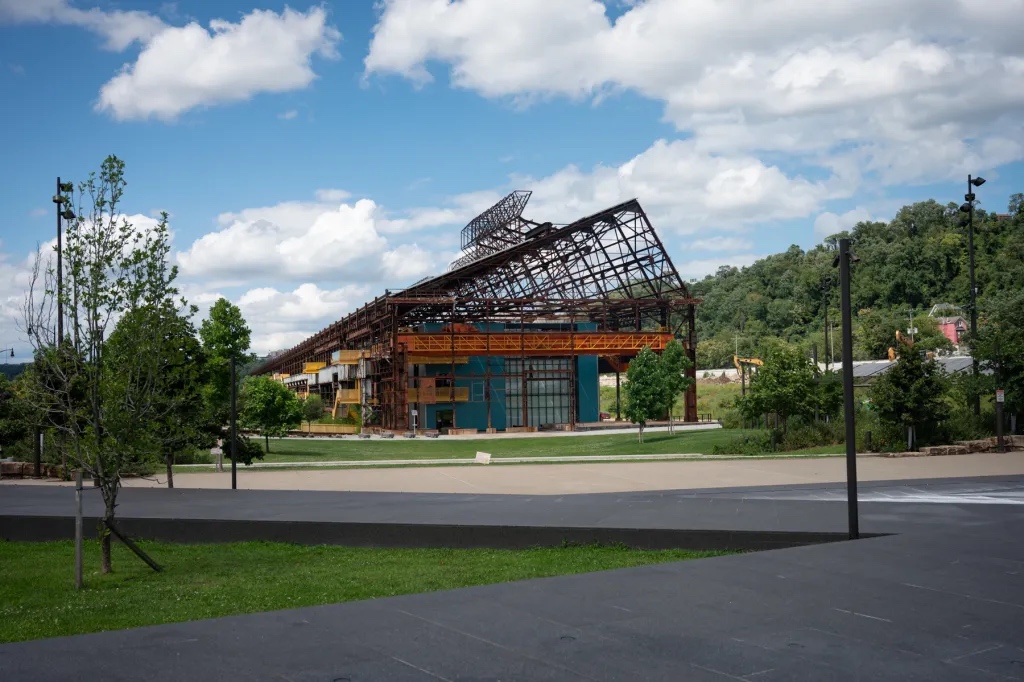

When is development a good thing?
Many local leaders welcome the injection of money, jobs and industry.
“There’s a lot of potential and promise for good jobs for the community and increasing the number of people that are living here,” said City Councilor Barb Warwick, who represents the neighborhood. “It’s also important that we are deliberate with this development in making sure that it is, in fact, a development that uplifts the people who are living in Hazelwood.”
But Pastor Lutual Love, of Hazelwood’s Praise Temple Deliverance Church, believes that the Hazelwood Green developers aren’t extending development to the rest of the neighborhood.
Love, who has lived in the neighborhood for roughly 45 years, said: “I don’t see how what Pitt and them is doing is going to benefit the community. It doesn’t benefit the community — it benefits the people that’s developing it but does not bring any particular resources to the people who live in the community.”

Shields, who has partnered with both Pitt and CMU for unrelated work, believes the research activities of Pitt’s biomanufacturing facility could benefit Hazelwood. Still, the university is only asking residents for permission to develop a ready-formed plan, she said, presenting “a blueprint already out, and it’s going to happen anyway.”
“Pitt coming to Hazelwood and presenting this BioForge, it was something that they just didn’t come up with in a day,” she said.
Pitt views the Hazelwood Green site — large and close to campus — as an opportunity to transform the university into a global leader in biomanufacturing while growing the industry in Pittsburgh, said Kinsey Casey, associate vice chancellor for economic development in the health sciences.
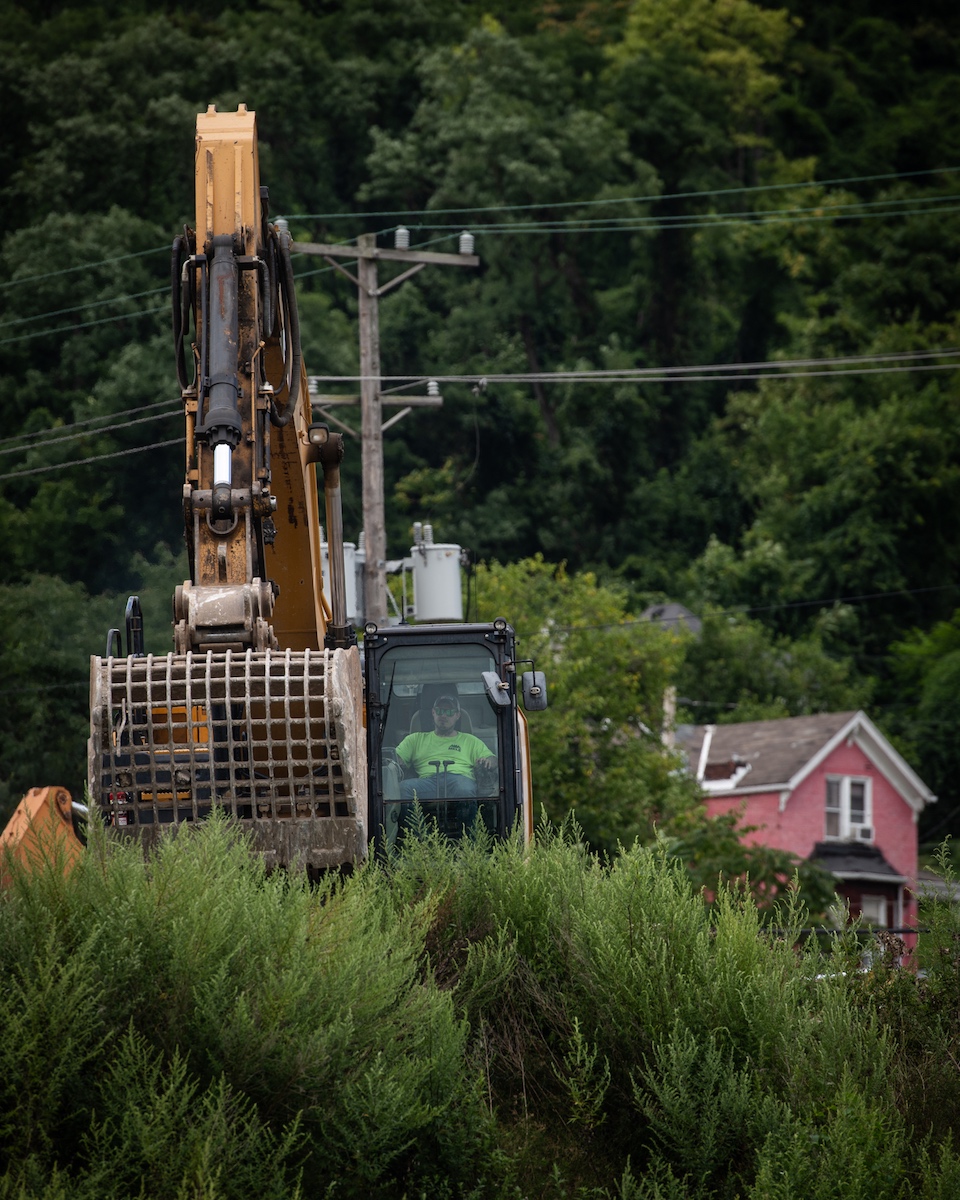
“Our intention is to really involve and engage the community in this development,” Casey said.
To that end, the university has developed three planning teams, partially staffed with leaders of Hazelwood community organizations, to determine how the neighborhood can benefit. The teams — which have met 30 times since July 2022 — are respectively exploring STEM education opportunities for youth; “new paths of employment” and workforce development programs; and means of ensuring existing residents and businesses thrive.
Sonya Tilghman, executive director of the Hazelwood Initiative, serves on that last planning team. They’ve begun meeting with residents, and she’s sought to familiarize members with the Greater Hazelwood Neighborhood Plan. The plan, created with residents, has a clear objective for the neighborhood’s future: “development without displacement.”
To Tilghman, when developers like Pitt partner with organizations and say they want their projects to serve the community, “I think you lean into that.”
“The neighborhood needs investment, right? We’ve had decades upon decades upon decades of no to minimal investment, and that hasn’t helped, really, the residents in the neighborhood,” Tilghman said.
Peter Kerwin, a spokesperson for CMU, said the university has been involved in several meetings with residents.
Based on that feedback, the university plans to offer a workshop on technology training for senior citizens and tutoring services at its existing space on Hazelwood Green. CMU also partnered with a neighborhood organization this summer to offer STEM programming to youth and hopes to offer additional engineering programming as early as this fall.
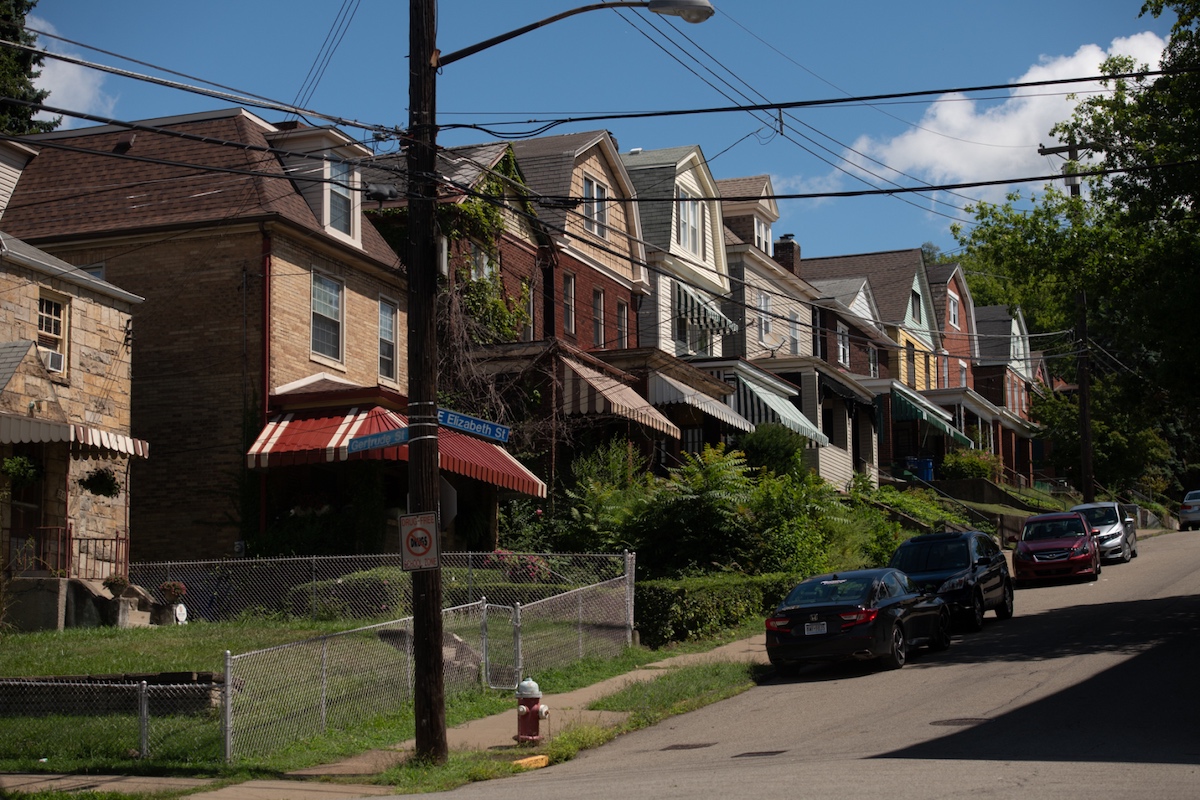
Cole-McKamey, who has lived in the neighborhood for more than 45 years, is wary of developers. She’s the executive director of People Of Origin Rightfully Loved And Wanted, or P.O.O.R.L.A.W., a coalition of residents seeking to prevent gentrification in Hazelwood. She says she doesn’t want her neighborhood to become another East Liberty, which saw the demolition of an affordable housing complex, and the displacement of hundreds of residents, as the neighborhood gentrified.
She doesn’t believe developers have acted in the neighborhood’s best interests. For example, Hazelwood has lacked a full-service grocery store for decades. On the site of a former grocer sits the artisan French bakery, developed with funding from the Heinz Endowments and others.
In 2021, a coalition formed by P.O.O.R.L.A.W. and Pastor Love’s Praise Temple Deliverance Church received approval from the city’s Urban Redevelopment Authority to build a grocery store. The group is currently searching for a general contractor. Love believes the effort offers the Hazelwood Green developers an easy opportunity to positively serve the community — but, so far, they haven’t seized it.

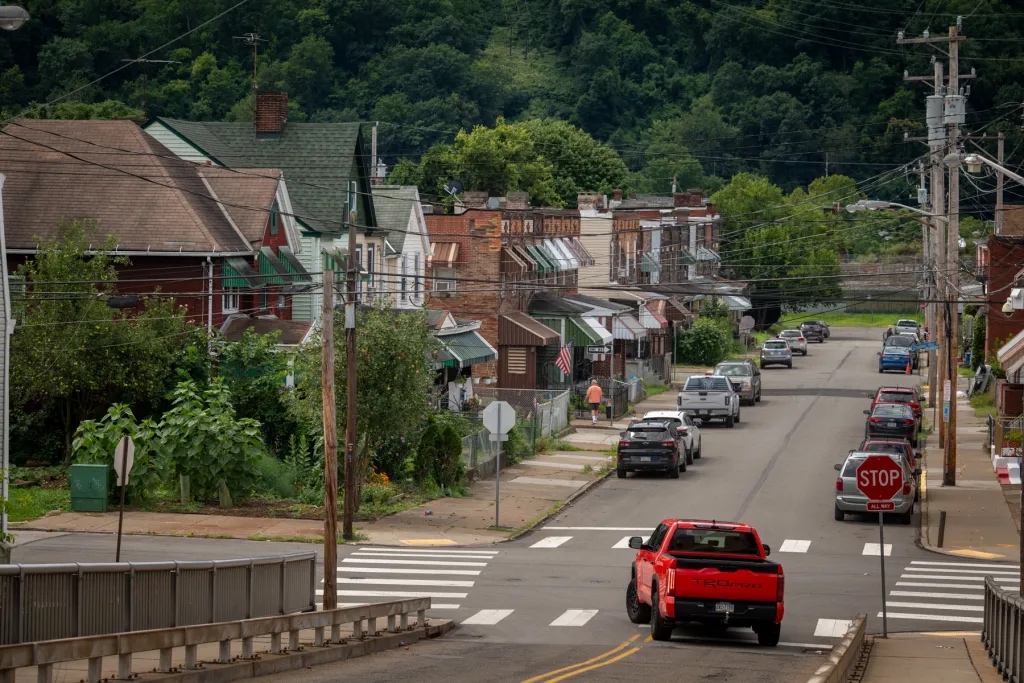
“When [representatives with Almono LP] came and they put their little whiteboards up and they asked everybody, ‘What’s the No. 1 concern in the community?’ everybody in the community put ‘grocery store,’” Love said. “It would seem logical that they would step up and help spearhead that, but they’re not.”
Todd Stern, managing director of U3 Advisors, which serves as the site’s project director, said that gentrification was a concern he shared but added that it’s “pretty early days.” He said that the foundations are continuing to pursue mixed-income and affordable housing on the site and have financially supported broader efforts in the neighborhood to ensure affordability.
The Heinz Endowments has invested nearly $87 million into the neighborhood, about half of which has gone to “support aimed at improving the neighborhood and the quality of life of the people who live there,” according to a 2022 issue of The Heinz Endowments’ magazine.
Cole-McKamey said many residents are left out of conversations about the development happening around them. She’s heard little about the Pitt and CMU projects on Hazelwood Green, which she partly attributes to Pitt selectively engaging community groups.
Pitt wants to “partner with anybody that’s going to dance to their music,” Cole-McKamey said.
Love feels similar frustrations.
“Yes, Hallelujah, they have meetings,” he said. “But their meetings are with the same people, and they’re not with people who live in our community. They’re with people who work in our community.”
Tilghman, who lives in Swissvale, is however pleased with the ways Pitt and CMU have engaged the Hazelwood community. CMU has not publicly outlined an engagement process like Pitt, but Tilghman said “it feels like it’s being prioritized.”
An emphasis on job opportunities
Nearly every community member who spoke with PublicSource said the universities should work to connect Hazelwood residents to the job opportunities available on Hazelwood Green. According to the neighborhood plan, 56% of Greater Hazelwood residents of working age were employed, compared to 76% of city residents overall.

ElevateBio, Pitt’s Massachusetts-based commercial partner for the project, estimates that the biomanufacturing facility will produce 900 construction jobs and more than 170 full-time jobs. About half of the full-time positions will be accessible to those with community college degrees or trade-school experience, and the company will pay for their job training.
“We want to make sure that Hazelwood residents have the first opportunity for those jobs,” Casey said of the full-time and temporary opportunities. Beyond that, the university is still thinking through solutions to keep Hazelwood affordable for current residents and support local businesses, officials said.
Kerwin, at CMU, said the university expects jobs on the Hazelwood Green site to be available to residents. The university and its construction partner hosted an opportunities fair in the neighborhood last month.
Shields, the founder of JADA House, welcomes the training opportunities but cautioned that any training would have to consider the educational backgrounds of Hazelwood residents. “As we know, most people in low-income communities do not have degrees,” she said.
Love, though, isn’t buying it.
“That’s a talking point that developers use knowing they cannot fulfill it,” he said. “They shouldn’t say things like that.”
What comes next?
Keith Caldwell, executive director of place based initiatives for Pitt’s Office of Engagement and Community Affairs, said the university will look at the number of community meetings it attends and the number of residents hired for jobs to hold itself accountable to the neighborhood.
Since July 2022, Pitt representatives say they have attended 38 public forums or community meetings in Hazelwood and the university has held seven tabling events, a university official said. “We’re a year-plus into a formal process, well ahead of the opening of this facility, right,” Caldwell said. “That’s really creating a lot of lead time, a lot of runway, to be able to really engage folks.”
The university also plans to open a community engagement center in the neighborhood, signing a long-term lease with the Center of Life neighborhood organization. Angel Mckinstry, a Hazelwood resident of about 10 years who works for Center of Life, said the organization views development as a way “to bring other people into the community, to make it more diverse, to bring in the business.”
“I just think it’s a good idea,” Mckinstry, 34, said of the university projects. “There’s plenty of space down there.”

Pitt’s engagement hasn’t reached Cole-McKamey yet, she said — but she hopes that will change.
“This is development time,” she said. “If we are all at that same table, we can get things done, regardless if we like each other or get along or not. It’s for the best interest of the people of this community.”

